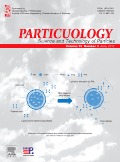
Particuology
Scope & Guideline
Connecting Academia and Industry through Particle Science
Introduction
Aims and Scopes
- Particle Dynamics and Interactions:
Research on how particles interact with each other and their surrounding media, including studies on forces, collisions, and the resulting behavior in various environments. - Computational Modeling and Simulation:
Utilization of advanced computational methods, including CFD-DEM simulations, to model the behavior of particles in different systems, aiding in the understanding of complex interactions and optimizing processes. - Material Characterization:
Investigation into the physical and chemical properties of particles and their influence on performance in applications such as catalysis, energy storage, and environmental remediation. - Application in Industrial Processes:
Research that translates findings into practical applications, particularly in fields like pharmaceuticals, energy, and materials engineering, focusing on optimizing processes involving particulate materials. - Environmental Impact Studies:
Exploration of the environmental implications of particulate materials, including pollutant behavior, aerosol dynamics, and the impact of particles on air and water quality.
Trending and Emerging
- Nanoparticle Applications in Medicine:
There is a growing focus on the use of nanoparticles for drug delivery and therapeutic applications, highlighting their potential in improving treatment efficacy and targeting specific diseases. - Sustainable and Green Technologies:
Research exploring the utilization of waste materials and sustainable practices in the production and application of particulate materials is on the rise, driven by a global emphasis on sustainability. - Advanced Characterization Techniques:
Emerging analytical techniques such as advanced imaging and in situ monitoring are becoming increasingly important for understanding particle behavior and interactions on a microscale. - Artificial Intelligence and Machine Learning in Particle Studies:
The integration of AI and machine learning for predictive modeling and optimization in particle dynamics and processing is gaining traction, enabling more efficient design and analysis. - Interdisciplinary Approaches:
There is a trend towards interdisciplinary research that combines insights from material science, environmental science, and engineering to address complex challenges associated with particulate materials.
Declining or Waning
- Traditional Granulation Techniques:
Research focused on conventional granulation methods has decreased as the field moves towards more innovative and efficient techniques, such as microfluidics and advanced agglomeration methods. - Basic Particle Size Analysis:
The emphasis on simple particle size characterization has waned, with a shift towards more sophisticated analyses that incorporate particle morphology, interaction dynamics, and real-time monitoring techniques. - Static Particle Behavior Studies:
Studies concentrating solely on static behaviors of particles, such as settling or packing, have become less common as researchers focus more on dynamic interactions and process-related applications. - Conventional Adsorption Studies:
While adsorption remains a critical area, traditional studies on basic adsorption mechanisms are being overshadowed by more complex investigations that consider multi-component systems and advanced materials.
Similar Journals
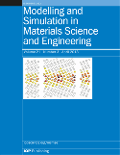
MODELLING AND SIMULATION IN MATERIALS SCIENCE AND ENGINEERING
Advancing the Frontiers of Materials InnovationMODELLING AND SIMULATION IN MATERIALS SCIENCE AND ENGINEERING, published by IOP Publishing Ltd, serves as a vital resource for researchers, professionals, and students engaged in the multifaceted fields of materials science, condensed matter physics, and computational mechanics. Since its inception in 1992, this journal has been committed to advancing knowledge through high-quality research articles, reviews, and simulations that explore complex interactions within materials. With an impressive Scopus rank in multiple categories, including Q2 in Materials Science and Mechanics of Materials, it reflects its significant influence and relevance in the academic community. Though not an open-access journal, it provides critical insights and developments in modeling techniques and simulations aimed at improving material performance and understanding thermodynamic processes, making it an essential read for those at the forefront of materials innovation. As it continues to expand its scope and reach into 2024 and beyond, MODELLING AND SIMULATION IN MATERIALS SCIENCE AND ENGINEERING remains a key platform for disseminating groundbreaking research that shapes the future of the discipline.

Computational Particle Mechanics
Transforming Knowledge into Cutting-Edge ApplicationsComputational Particle Mechanics, published by SPRINGER INTERNATIONAL PUBLISHING AG, is a leading journal dedicated to advancing knowledge in the interdisciplinary fields of computational mechanics, civil engineering, and fluid dynamics. With an impressive impact factor reflecting its high-quality research publications, this journal maintains a strong presence in the academic community with a Q1 ranking in categories such as Civil and Structural Engineering, Computational Mechanics, and Numerical Analysis as per the latest 2023 evaluations. Researchers and professionals benefit from the journal's commitment to open-access options, promoting wider dissemination of groundbreaking studies. Operating under the Swiss publishing house since 2014, Computational Particle Mechanics aims to foster innovation through the exploration of particle-based methods and simulations, making significant contributions to methodologies within computational mathematics and modeling. As the journal continues to evolve until its converged years end in 2024, it stands as a vital resource for those looking to enhance their expertise in dynamic modeling and simulation techniques.

TRANSACTIONS OF TIANJIN UNIVERSITY
Elevating research excellence with a global perspective.TRANSACTIONS OF TIANJIN UNIVERSITY, published by SpringerNature, is a premier journal in the field of multidisciplinary research, boasting an impressive Q1 ranking and placing within the top 93rd percentile of its category according to Scopus. With an ISSN of 1006-4982 and E-ISSN of 1995-8196, this journal facilitates insightful and innovative contributions that span various disciplines, making it a vital resource for academics and professionals alike. Established in 2004, the journal continues to thrive with a commitment to advancing knowledge and fostering collaboration in scientific inquiry. TRANSACTIONS OF TIANJIN UNIVERSITY aligns with global research trends and offers a platform for the dissemination of high-quality research findings, promoting interdisciplinary approaches to solving complex problems. Located in China, its influence extends well beyond national borders, appealing to a diverse readership eager to explore the latest advancements and discussions in the multidisciplinary arena.
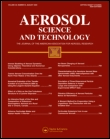
AEROSOL SCIENCE AND TECHNOLOGY
Bridging the Gap Between Theory and Practice in Aerosol TechnologyAerosol Science and Technology is a premier academic journal dedicated to the study of aerosols, their properties, and their interactions with the environment, published by Taylor & Francis Inc. Since its inception in 1981, the journal has established itself as a leading source of research, boasting a commendable impact factor which underscores its relevance and influence in the fields of Environmental Chemistry, Materials Science, and Pollution, consistently ranking in the Q2 Quartile. With its comprehensive coverage of the latest advancements and interdisciplinary approaches, the journal serves as an essential resource for researchers, professionals, and students who seek to deepen their understanding of aerosol science and its applications. Although it does not currently offer Open Access options, its rigorous peer-review process ensures the publication of high-quality research that contributes significantly to both theoretical and practical advancements in the field. Readers will benefit from the journal's insightful articles that explore the complexities of aerosols and their impact on climate change, air quality, and health outcomes, making it a pivotal platform for disseminating cutting-edge findings up until 2024.
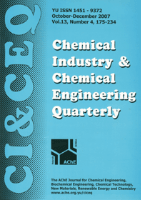
Chemical Industry & Chemical Engineering Quarterly
Advancing Chemical Engineering Knowledge, One Quarter at a Time.Chemical Industry & Chemical Engineering Quarterly is a distinguished, open-access journal published by ASSOC CHEMICAL ENG that serves as a vital platform for innovative research within the field of chemical engineering. Established in 2000 and actively disseminating knowledge since then, this journal has garnered acknowledgment for its contribution to the field, currently being ranked in the third quartile (Q3) of Chemical Engineering (Miscellaneous) for 2023. With a focus on advancing understanding of chemical processes and facilitating the integration of industry operations with engineering principles, it provides a forum for both theoretical and applied research. The journal is committed to maintaining high standards of academic rigor, supported by its indexed presence in Scopus, where it ranks #173 out of 273 in the general chemical engineering category. As an open-access journal, it promotes the rapid dissemination of research findings, enhancing accessibility for scholars, professionals, and students worldwide. Based in Serbia, the journal is an essential resource for those seeking to stay at the forefront of chemical engineering advancements.
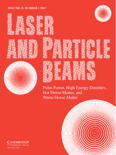
LASER AND PARTICLE BEAMS
Advancing the Frontiers of Laser and Particle ResearchLASER AND PARTICLE BEAMS is a distinguished peer-reviewed journal published by Hindawi Ltd, specifically focusing on the fields of atomic and molecular physics, optics, condensed matter physics, and electrical and electronic engineering. With its commitment to advancing knowledge in these areas, the journal has transitioned to an Open Access model since 2021, ensuring that research findings are readily accessible to the global scientific community. Covering an extensive publication history from 1983 to 2023, it serves as an important platform for researchers, professionals, and students interested in the latest developments and applications of laser technologies and particle beam methodologies. Although currently categorized in Q4 for two of its areas and Q3 for electrical engineering in the 2023 base metrics, LASER AND PARTICLE BEAMS is positioned to foster innovative research and discussions within the laboratory and applied settings, contributing significantly to advancements in its respective disciplines. The journal encourages contributions that push the boundaries of knowledge and seeks to attract a diverse array of submissions to enhance its impact in the scientific community.
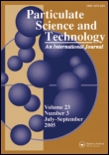
PARTICULATE SCIENCE AND TECHNOLOGY
Innovating Solutions in Chemical EngineeringParticulate Science and Technology is a distinguished journal published by Taylor & Francis Inc, dedicated to advancing the understanding and application of particulate materials across various scientific fields. Serving the international community since 1983, this journal features original research, reviews, and technical notes that address key developments in chemical engineering, particularly focusing on the generation, processing, and application of particulate matter. With an impact factor that reflects its significant contributions within the discipline (Ranked Q2 in Chemical Engineering), the journal provides a vital platform for researchers, professionals, and students seeking to enhance their knowledge and influence in the field. While not currently open access, Particulate Science and Technology is committed to disseminating high-quality research that stimulates innovation and fosters collaboration amongst experts worldwide. For those invested in the advancement of chemical engineering principles, this journal is an invaluable resource.
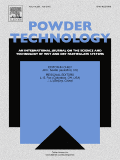
POWDER TECHNOLOGY
Unleashing Potential in Powder CharacterizationPOWDER TECHNOLOGY is a prestigious journal published by Elsevier, focusing on the vital field of powder technology within chemical engineering. With an impressive impact factor and ranked in the top percentile (88th) of Scopus, this journal has secured its position as a leading resource, classified in the Q1 category of Chemical Engineering (miscellaneous). The journal brings together groundbreaking research and innovative developments in powder processing, characterization, and application, making it an essential publication for researchers, professionals, and students interested in advancing knowledge and practices in this dynamic field. Established in 1967 and continuously evolving with a scope that encompasses the intersection of material science and engineering processes, POWDER TECHNOLOGY embodies a commitment to fostering scientific inquiry and sharing knowledge. Researchers can access relevant articles through a comprehensive platform, ensuring timely dissemination of findings that are critical for both academia and industry.

CANADIAN JOURNAL OF CHEMICAL ENGINEERING
Transforming Ideas into Engineering SolutionsCanadian Journal of Chemical Engineering, published by Wiley, stands as a pivotal platform in the field of chemical engineering, addressing a myriad of topics essential for researchers, professionals, and students alike. With ISSN 0008-4034 and E-ISSN 1939-019X, this journal has been a cornerstone of chemical engineering scholarship since its inception in 1958 and continues to provide valuable insights through its rigorous peer-reviewed articles. The journal is ranked in the Q2 category of the Scopus quartile rankings, reflecting its influence and relevance within the chemical engineering community, with a notable position of #137 out of 273 in the general chemical engineering field. Although it does not offer open access options, its comprehensive coverage of contemporary research and applications solidifies its status as a vital resource for advancing knowledge and innovation in chemical engineering.

Journal of Industrial and Engineering Chemistry
Fostering Innovations for a Sustainable TomorrowThe Journal of Industrial and Engineering Chemistry, published by Elsevier Science Inc, stands as a premier platform since its inception in 1996, dedicated to the dissemination of innovative research in the field of Chemical Engineering. Located in South Korea, this influential journal has established itself with an impressive impact factor and is categorized in the Q1 quartile for chemical engineering (miscellaneous), ranking in the top 12% of its category according to Scopus. With a focus on cutting-edge industrial applications, the journal covers a diverse range of topics including chemical processes, engineering innovations, and sustainable practices, appealing to a broad spectrum of researchers, professionals, and students. Although currently not open access, the journal offers a wealth of resources for advancing knowledge and driving forward the chemical engineering discipline. The converged years from 1996 to 2024 reflect its ongoing commitment to excellence and timeliness in publishing high-quality research.